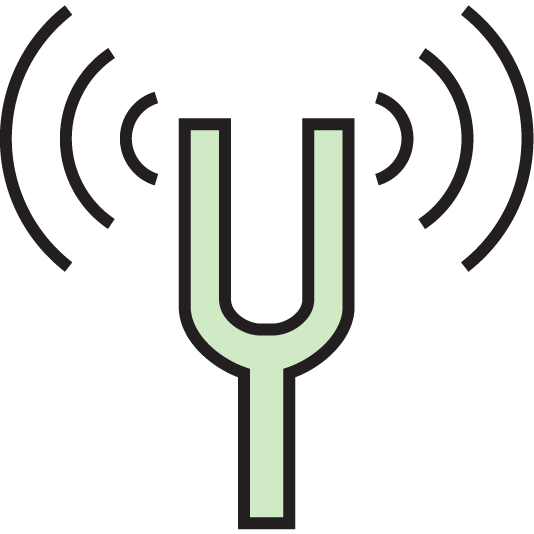Introduction
Sudden Sensorineural hearing loss (SSNHL) is a serious medical condition that requires collaboration between audiologists and physicians to successfully manage the patient and reduce the impact of negative long-term effects. Currently, if appropriate treatment is done early, hearing may be partially restored with successful outcomes (Stachler et al, 2012).
The formal definition of SSNHL is defined as a sensorineural hearing loss of at least 30 dB sensorineural hearing loss in at least 3 consecutive frequencies over 72 hours (Chandrasekhar et al, 2019). In addition to hearing loss, other symptoms may include tinnitus, vertigo, and aural fullness (Ng et al, 2021).
Resources are needed to help physicians use screening tools to rule out a conductive hearing loss (CHL) versus a Sensorineural Hearing Loss (SNHL) to start the appropriate medical intervention as soon as possible if SNHL is confirmed.
Screening tools such as the Rinne and Weber may be considered ‘old school’. However, they are cost-effective and safe to use to confirm the ear affected by the sudden hearing loss and whether it is sensorineural.
The Weber test, named after Ernst Heinrich Weber (1795-1878) is a screening test to lateralize sound. It narrows down which ear is the poor/affected ear.
The Rinne test, named after Heinrich Adolf Rinne (1819-1868) screens the type of hearing loss (sensorineural vs. conductive). Together, these two screening tools can provide a physician with enough information to refer for a full audiology assessment as soon as possible and to begin appropriate further medical treatment for sudden sensorineural hearing loss.
References:
Chandrasekhar, S.S., Tsai Do, B.S., Schwartz, S.R., Bontempo, L.J., Faucett, E.A., et al, 2019.
Clinical Practice Guideline: Sudden Hearing Loss (Update) Executive Summary.
Otolaryngology–Head and Neck Surgery, 161(2), p.195–210.
Ng, B., Crowson, M.G., Lin, V., 2021. Management of sudden sensorineural hearing loss
among primary care physicians in Canada: a survey study. Journal of Otolaryngology - Head and Neck Surgery, 50(1), p.1–11.
Stachler, R.J., Chandrasekhar, S.S., Archer, S.M., Rosenfeld, R.M., Schwartz, S.R., et al, 2012.
Clinical Practice Guideline. Otolaryngology–Head and Neck Surgery, 146(3_suppl), p.S1–S35.
